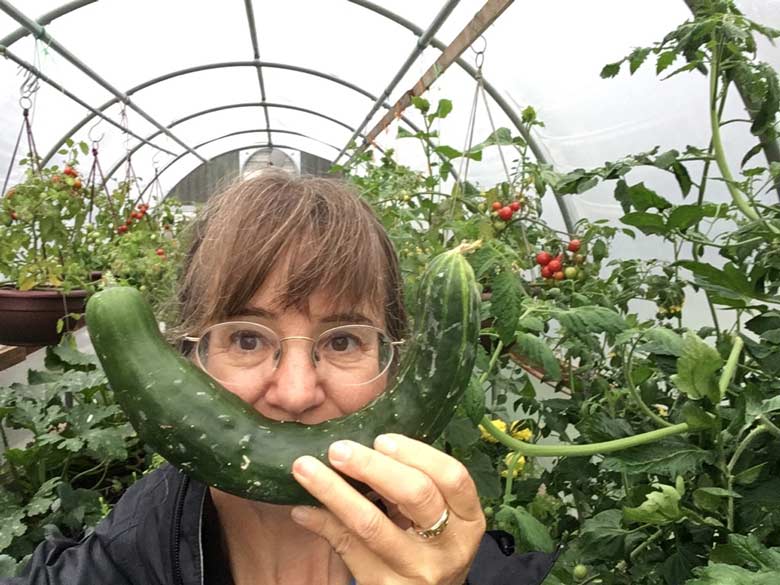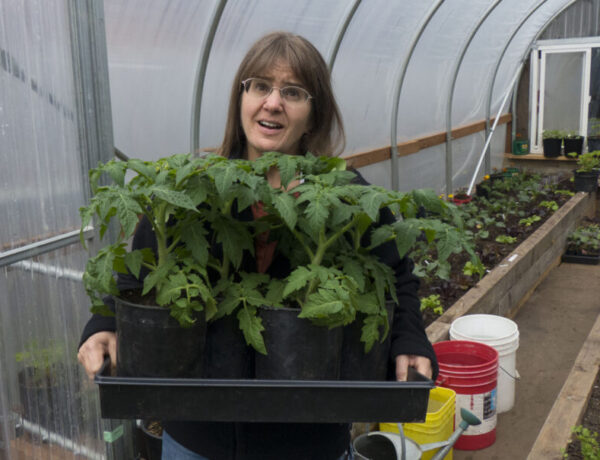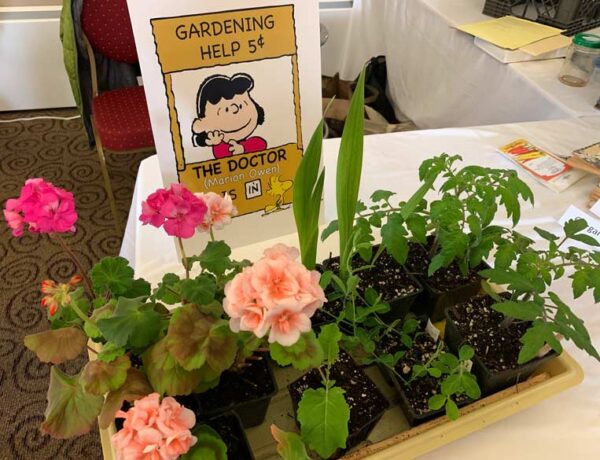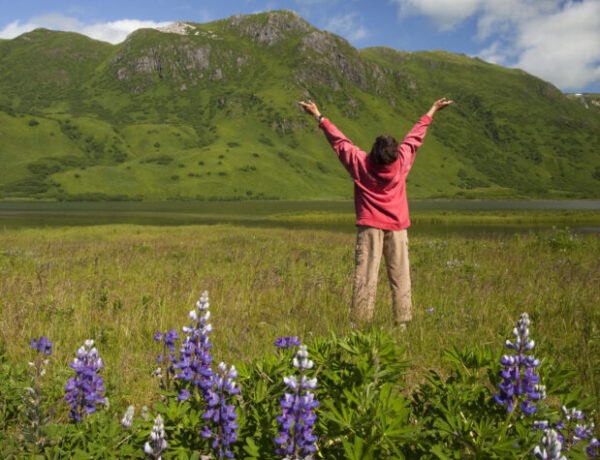Who’s that goofy gal wearing a cucumber smile?
It was a cool day in March when I donned a warm jacket and walked up Ole Johnson Street to the Kodiak Daily Mirror office for my appointment with then-publisher Nancy Freeman.
We sat in the conference room, sipped coffee, and talked about my new idea, a weekly gardening column for the newspaper. And I would write it.
We discussed the coming spring: Daffodils would soon be blooming, how best to grow seedlings under lights, those dang sparrows that dig up pea seeds, secrets of good compost… all manner of garden topics. Including earthworms.
Even though I was accustomed to pitching ideas to editors, having freelanced for Alaska Magazine for almost 10 years, I was nervous and felt like a car salesman.
Nancy, a tall, animated lady with bouncy hair, looked at me and asked, “Earthworms are good for the garden?”
Right then and there, I realized that I had, at least, an audience of one.
That was 25 years ago… and today’s column is number one thousand, three hundred.
[Hi, Marion here. This article was originally published in the Kodiak Daily Mirror, the hometown newspaper for Kodiak, Alaska. You can access the archive page for my past columns, written each week since 1986].
I dedicated my first article to Kodiak Island’s gardening cheerleaders, for if it weren’t for gardeners, our front yards would still be populated with king crab pots.
In that inaugural column, I wrote about three things to help us get through a period quite similar to what we are experiencing today: A cool spring.
First, prepare your soil…
“Kodiak’s soil is mostly volcanic in origin,” I said, “which means it has a low (acidic) pH, doesn’t drain very well, and contains little or no organic matter.”
“To the novice gardener, “ I continued., “this may seem like three strikes against even trying to grow peas, but the solution is simple: make raised beds and add plenty of organic matter to your soil.”
Plenty of organic material… In 1986, I built my first compost pile, basically following a technique perfected by Sir Albert Howard in the 1920’s while he was stationed in India.
Two months later, I turned the finished compost into new raised beds and by June I was eating my first, homegrown salad greens.
Over the years I came to appreciate how organic materials in general, and compost in particular are the organic gardener’s first answer to almost all shortcomings of an existing soil. “We are very fortunate here because Kodiak is blessed with copious quantities of organics,” I said. “Tides deposit windrows of kelp on the beaches, leaves gather along roads and under trees and many folks who raise chickens, horses, goats, and rabbits would probably love to have their ‘stable scraps’ hauled away.”
Incidentally, May 2 to 8 is International Compost Awareness Week. This year’s theme is “Grow, Eat…COMPOST.” On the website (compostfoundation.org) you’ll find educational activities galore for individuals, families, and teachers. Speaking of teachers, check out the annual poster contest.
For the second point, I outlined the basics of raising your own seedlings. “It’s not as hard as you think,” I wrote, adding my own cheerleader touches. “Keep the soil moist—but not too wet—and make sure they get enough light.”
Then I listed some of my favorite plants:
+ Herbs: dill, parsley, sage, wormwood, chamomile, fennel, oregano, and thyme.
+ Annual flowers: poppies, calendula, baby blue eyes, and nasturtiums,
+ Vegetables: broccoli, cabbage, lettuce, mustard spinach, bok choy, and red kale.
For the third tip, I introduced care and feeding of hand tools such as trowels, rakes, cultivators, and pitchforks.
“Now’s a good time to pull out those hand tools,” hoping to give gardeners something constructive to do on a rainy day.
“Look them over, clean them up, and replace handles and other parts if necessary. Give unfinished wood handles a coat of oil and scrape off old soil and rust.”
Most weeks, I simply wrote about topics I’d researched out of curiosity or to solve a garden problem I was dealing with. And I was determined to keep my tone and delivery out of the clouds (as in too stuffy) as a way to encourage new gardeners to enter the growing fold.
Near as I can tell, a year after COVID hit, the popularity of gardening has not waned. In fact, suppliers and growers alike speculate that the demand for seeds, plants, and garden tools may well outpace 2020.
No one knows how long the pandemic will continue, so people around the U.S. have created outdoor havens populated with patio furniture, above-ground swimming pools, and backyard gas fire pits. In Kodiak, while we’re not installing swimming pools on each block, we are seeing new hoophouses go up and raised beds being built. And the Kodiak Growers Facebook page continues to be sprinkled with how-to questions from first-time gardeners.
And that’s a good thing because we know what it’s like to go to the grocery store and find the produce section depleted of our favorite fruits and veggies. We’re better off, in so many ways, by growing at least some of our own vegetables.
Twenty-five years ago, I ended my first Garden Gate column by saying, “Until next time, think spring, talk to your plants, and share a gardening tip with your neighbor.
Thank you, for 25 years of planting words and harvesting ideas.
Cheers and blessings,
~ Marion
P.S. Are you fully enjoying your garden? If not, consider upping your compost game. Compost is the #1 thing you can do for your garden? Join the waitlist for my next FREE composting mini-class. Check out my Joy of Composting Facebook page. If you’d like to drop me a note, here’s my email address: marion (at) marionowenalaska.com.





1 Comment
FYI May 10, 2021 – Instagatrix
May 10, 2021 at 12:52 PM[…] Marion Owen: 25 years of writing about gardening in Kodiak, Alaska (Column #1300) Maggie from Bliss Blog & Shop and more -> The Passive Voice, From Publishers Weekly: School Libraries Are the Bedrocks of Freedom The Passive Voice, From Jane Friedman: How to Find Compelling Comps for Your Book By Doyle Rice, USA Today: ‘Extraordinary discovery:’ Remains of nine Neanderthals found in Italian cave; they were likely killed and eaten by hyenas By Paula Span, The New York Times: ‘I Need to Know I Tried’ Time-limited trials offer I.C.U. patients and their families a sense of empowerment in the face of low odds. By Ryan Warrender, Product Partnerships Manager, Google Web Creators: Raise the visibility of your Web Stories By Savannah Tanbusch, Blog Profiles: Marine Life Blogs […]